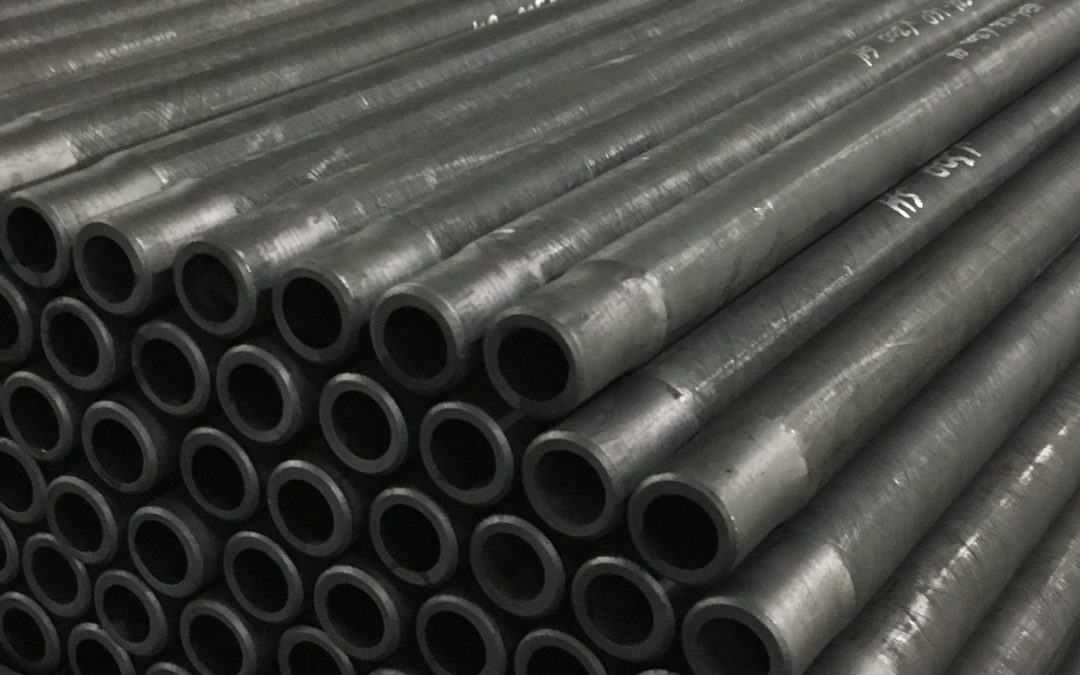
There are three different types of impervious graphite tubes currently used in the chemical process equipment industry; Resin bonded, carbon bonded graphite, and fully graphitized. Each type has specific characteristics and cost implications that should be taken into consideration for each specific application.
Resin Bonded Graphite Tube
A resin bonded tube consists of graphite flour combined with a resin binder and then extruded to the desired size. The high percentage of resin results in a non-porous tube, not requiring an additional resin impregnation step. After extrusion the tube is baked at 250 Deg C and then cut to length. The major advantage of the resin bonded tube is cost. The cost can be as low as ½ that of a partially graphitized or fully graphitized tube. In certain applications, it should be considered. However, in higher temperature, more corrosive applications it can experience corrosion and will have greatly decreased operating life compared to the other two popular tube offerings. The resin bonded tube has very low flexibility (higher brittleness), higher thermal expansion rate, and greatly reduced thermal conductivity. The combination of these last three properties lowers the tubes ability to withstand mechanical and thermal shock.
Carbon Bonded Graphite Tube
Carbon bonded graphite is a combination of graphite flour, resin, and lubricants extruded together to form the tube. The tube is then subjected to a temperature in the range of 1200 Deg C, resulting in a tube that contains both amorphous carbon and graphite. Compared to the fully graphitized tube, the lower processing temperature reduces the energy cost and the wear and tear on the furnace. Therefore, it could be a less costly tube than the fully graphitized. The tube typically has 8-10% porosity. It is made impervious in a phenolic resin bake/treat process. Compared to the resin bonded tube it has superior thermal properties and improved resistance to thermal and mechanical shock. Compared to the fully graphitized tube the presence of amorphous carbon increases the thermal expansion rate and lowers the tubes toughness, ductility, and thermal conductivity. The result is lower thermal shock resistance and resistance to fatigue failure due to tube vibration.
Fully Graphitized Tube
The fully graphitized tube uses the same basic raw materials as the carbon bonded graphite tube. The significant difference is that after forming the tube is graphitized at 2800 Deg C in a graphitizing furnace. This step eliminates all the amorphous carbon. It is porous, with 10-12% porosity typically, and requires the resin bake/treat cycle to make it impervious. Its fully graphitized structure results in superior thermal properties, including the highest thermal conductivity, lowest thermal expansion rate, excellent fatigue resistance, and improved flexibility and ductility relative to the other two tube options. It is the more resistant to thermal and mechanical shock, fatigue failure, and typically offers longer operational life.


